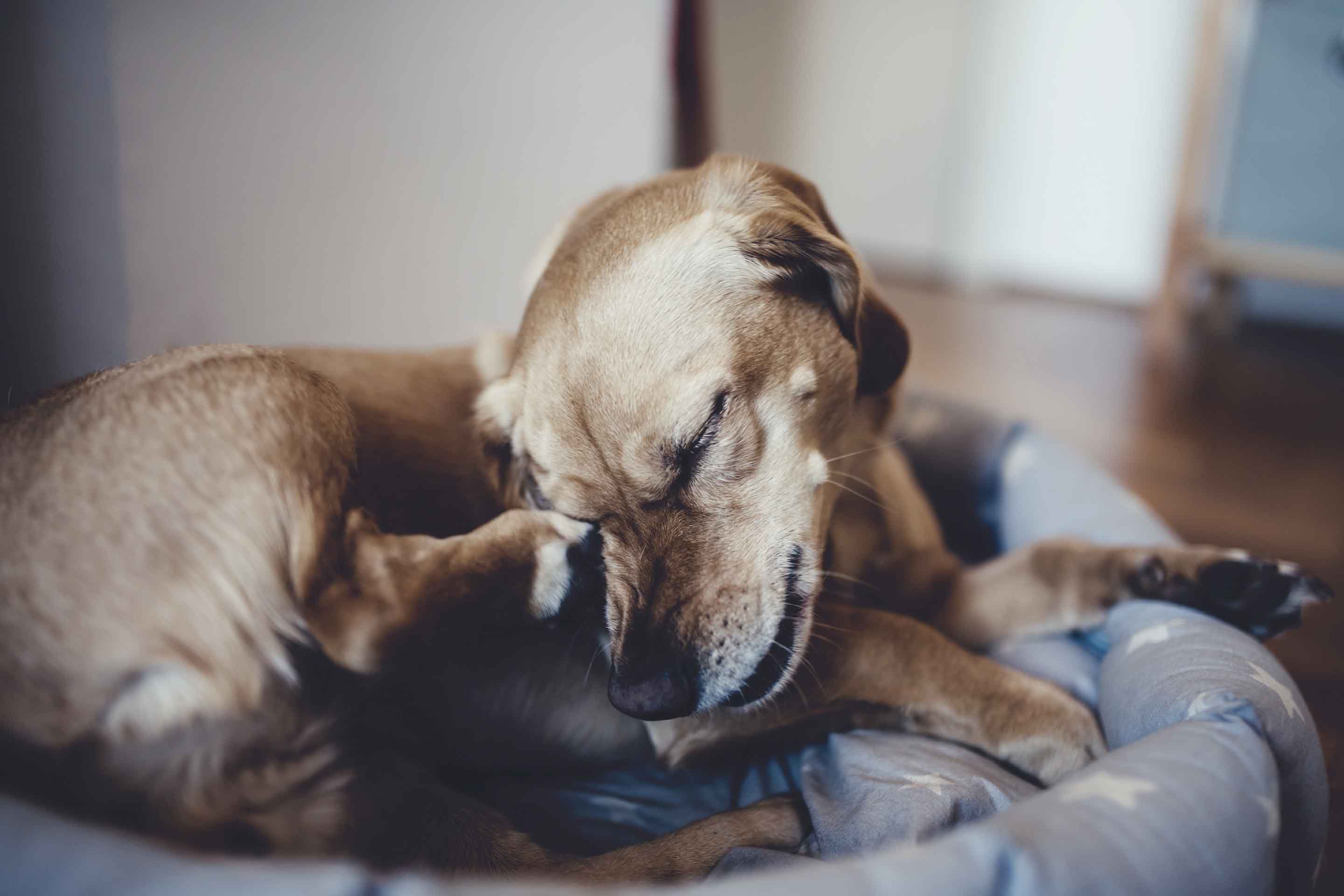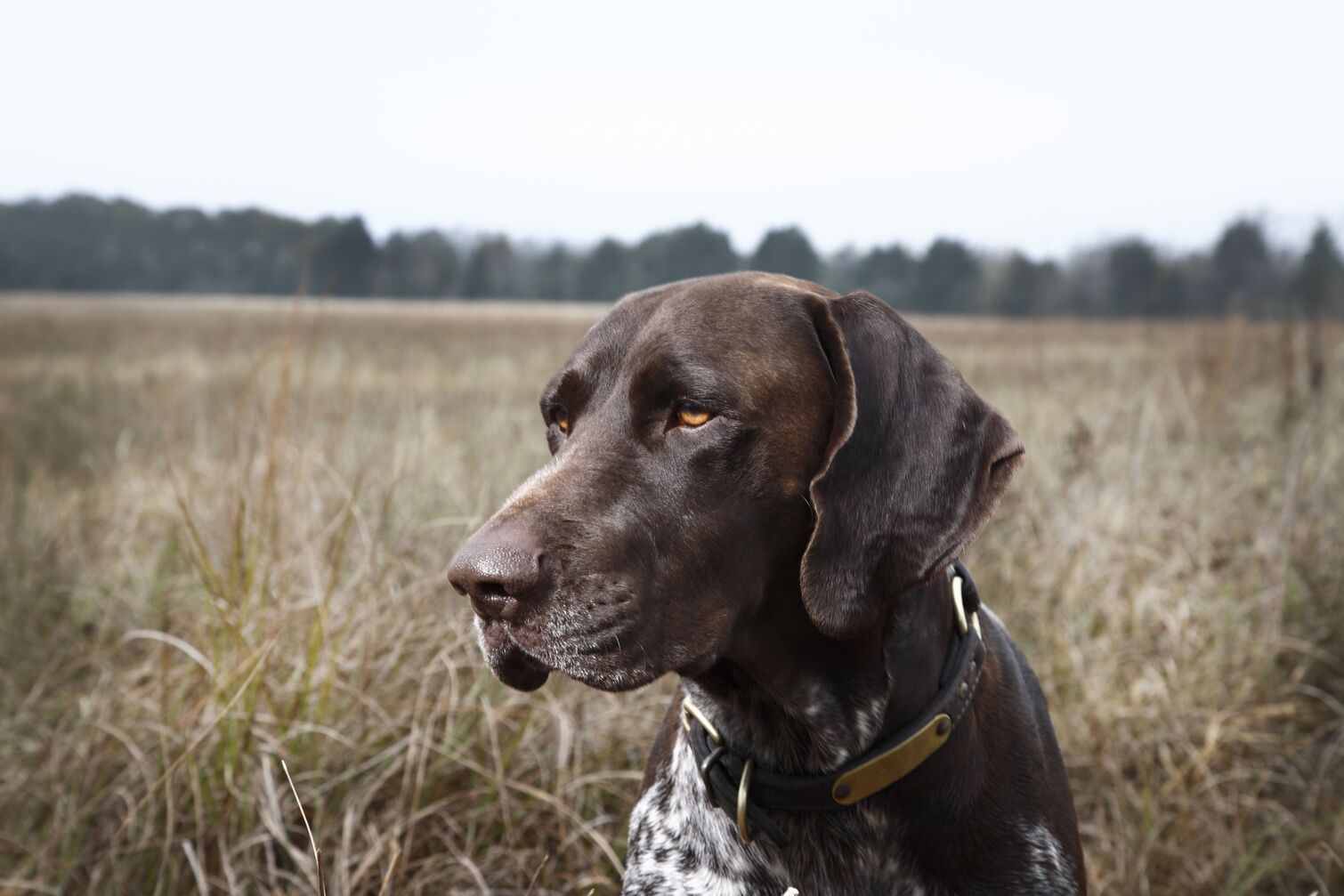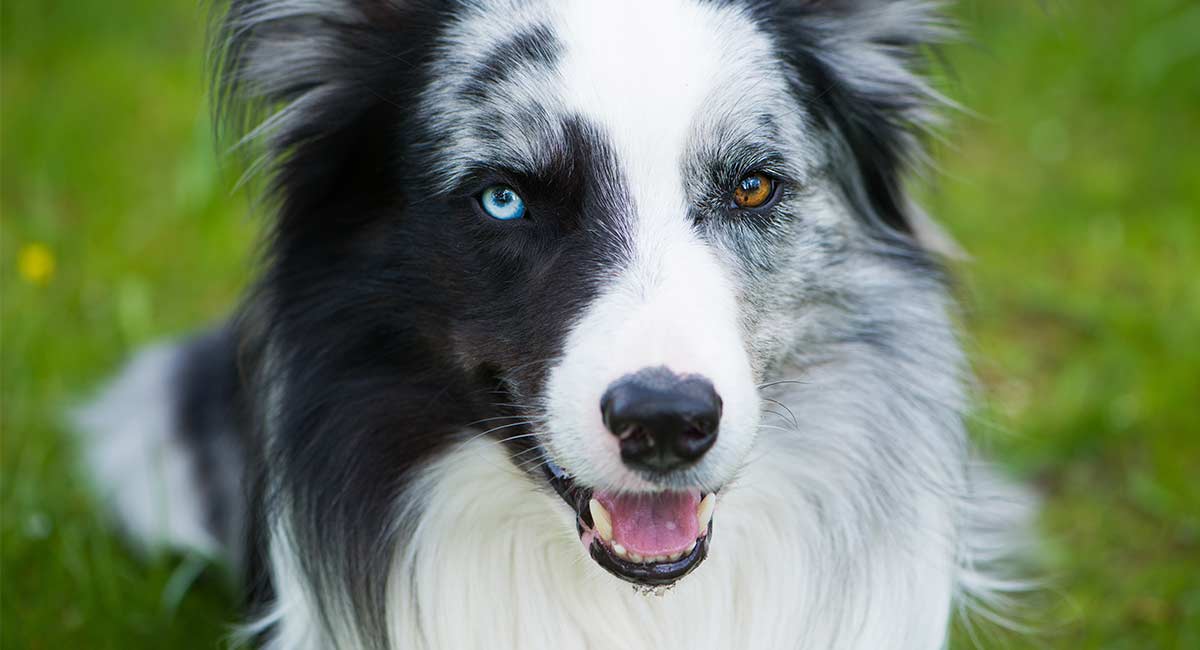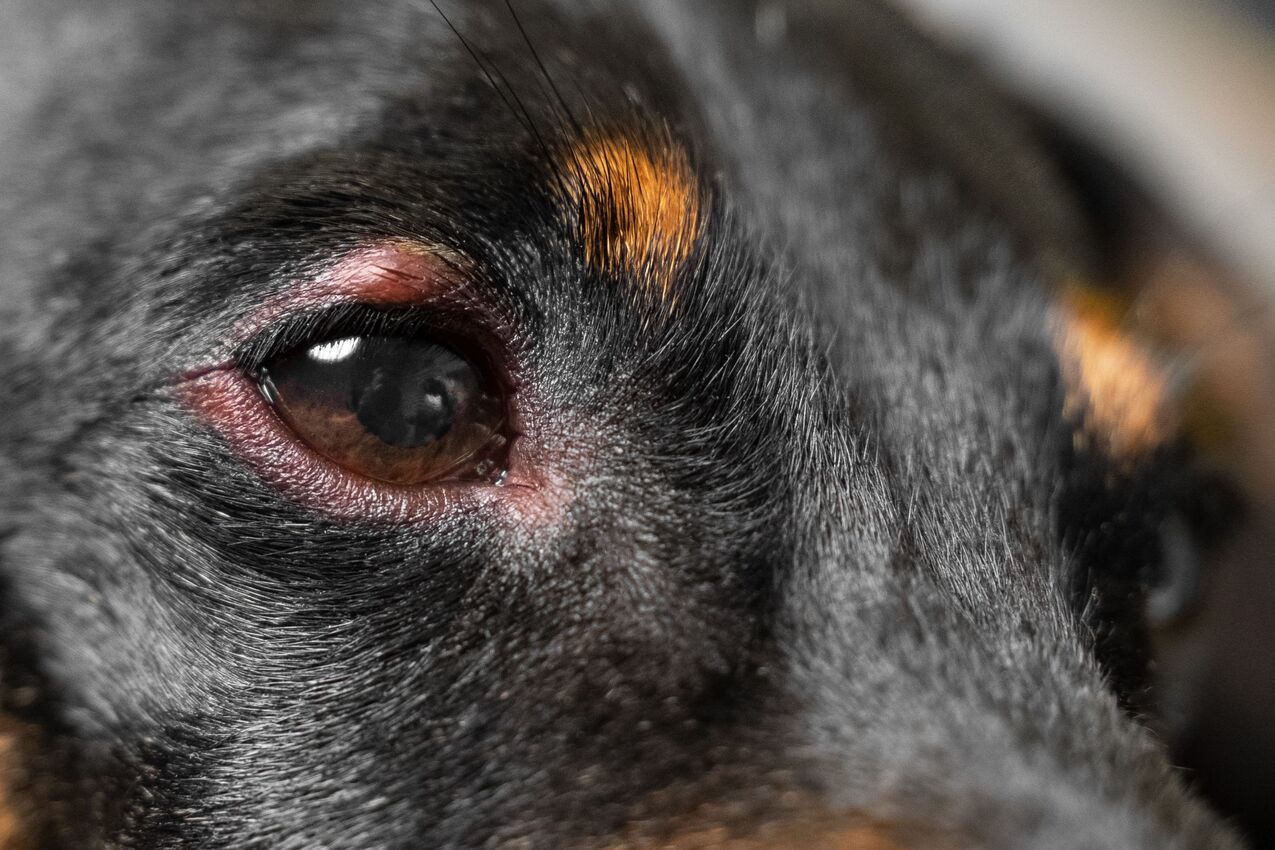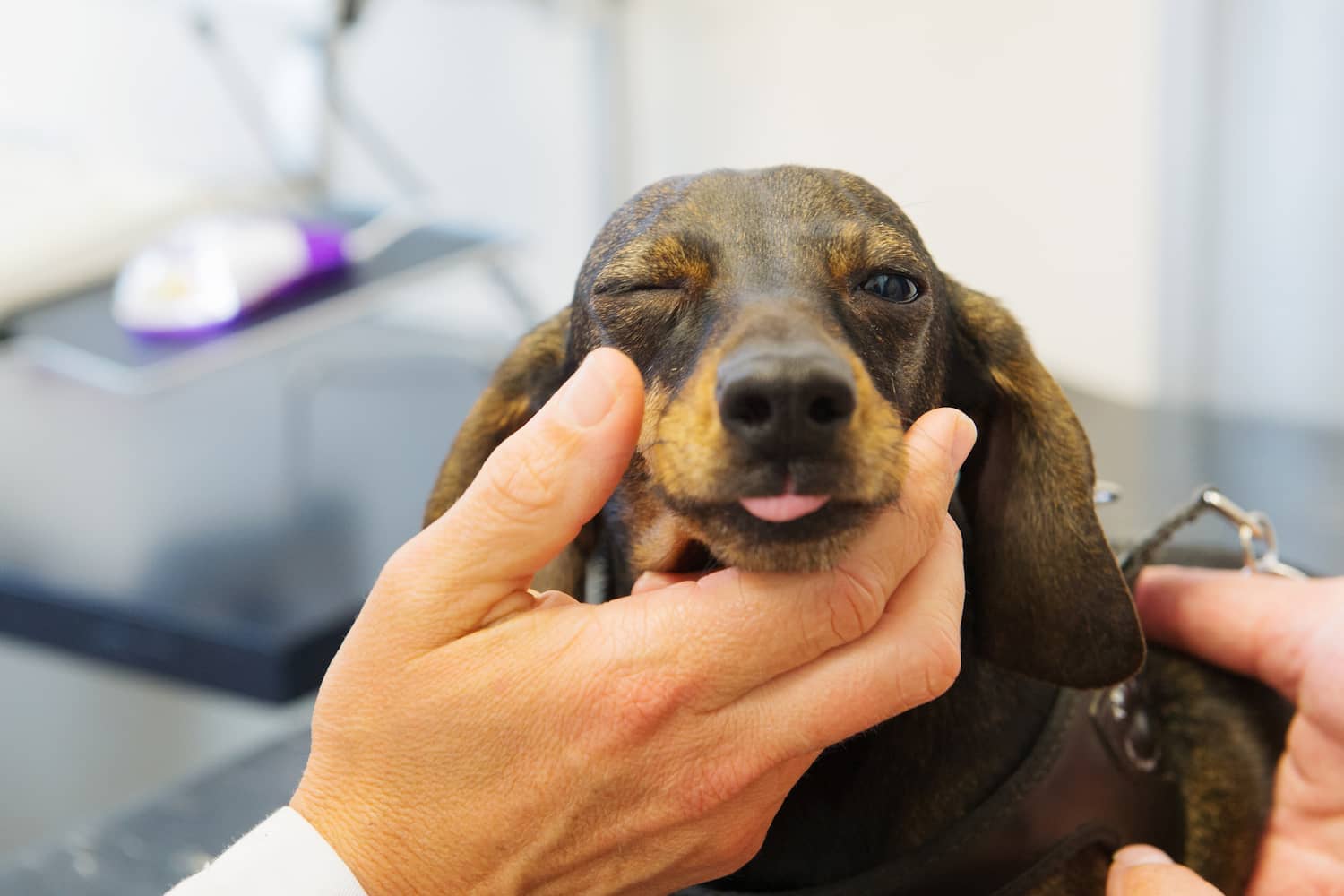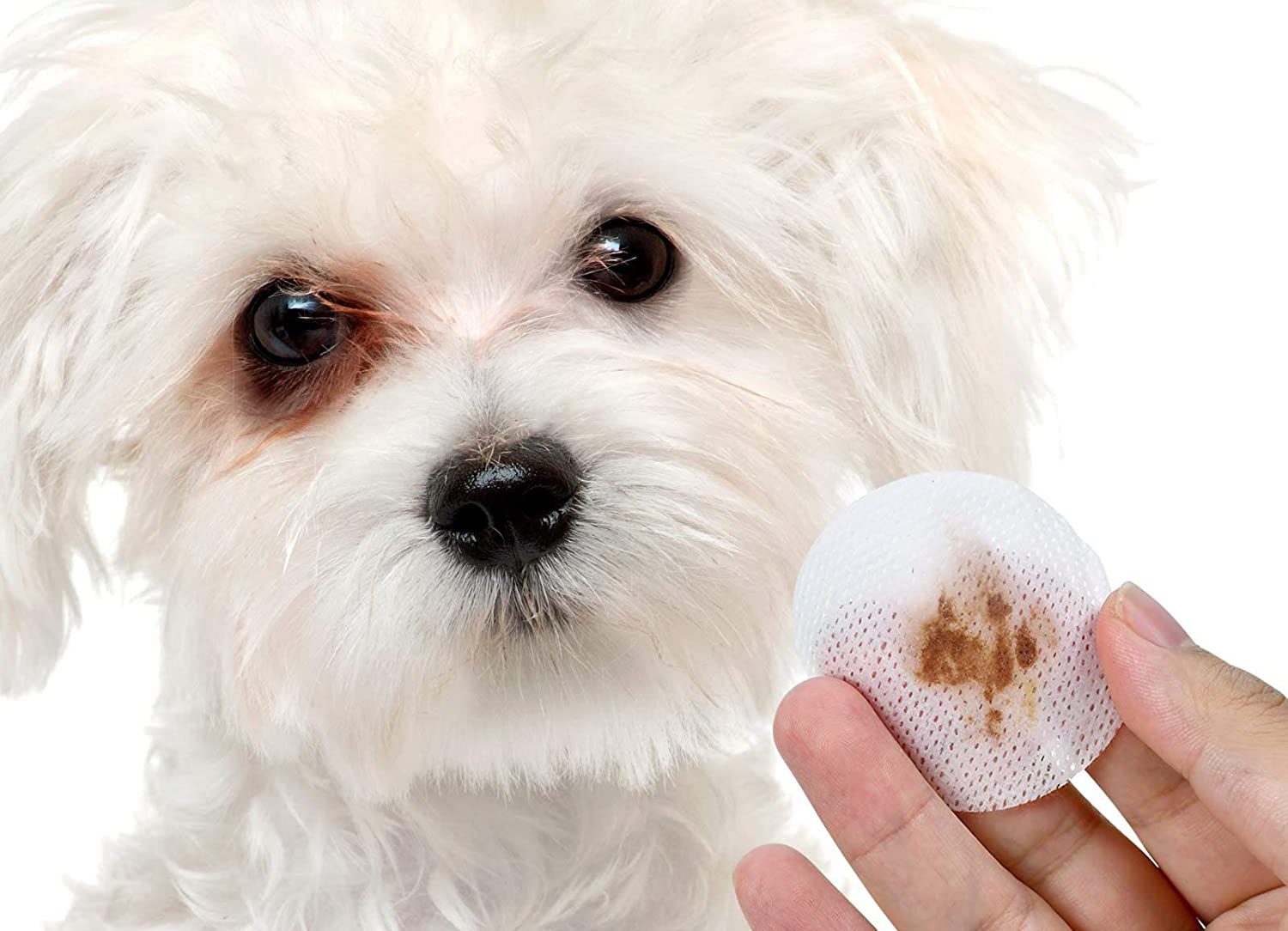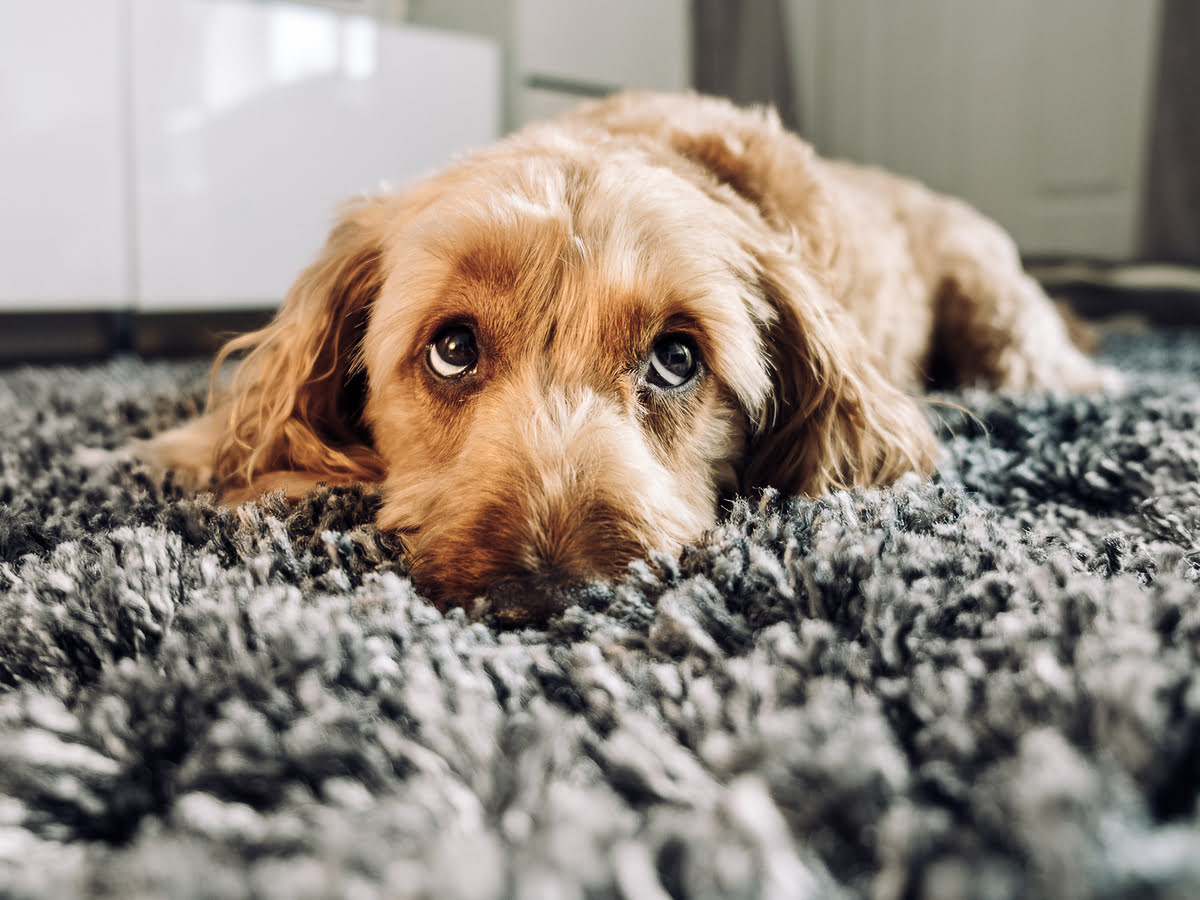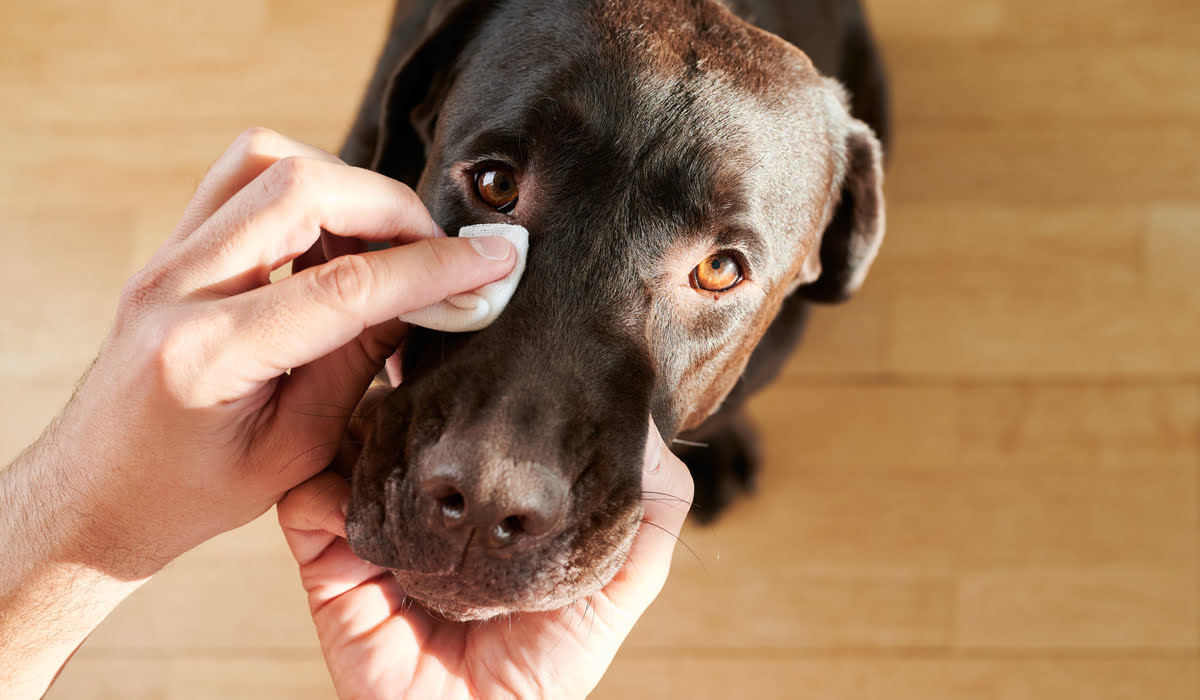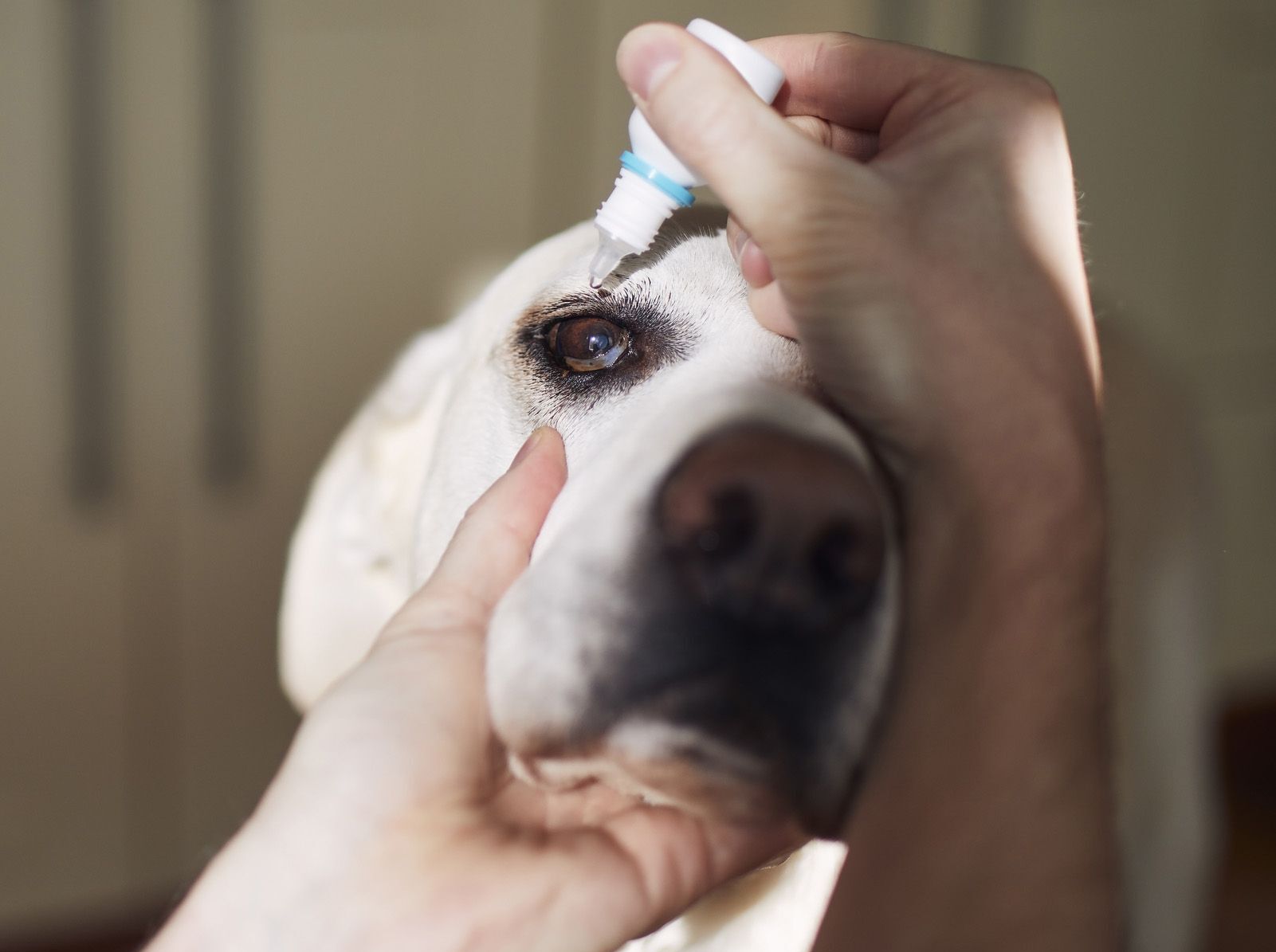Home>Health & Wellness>Common Health Issues>Eye and Ear Health>How Will My Dog Do With One Eye?
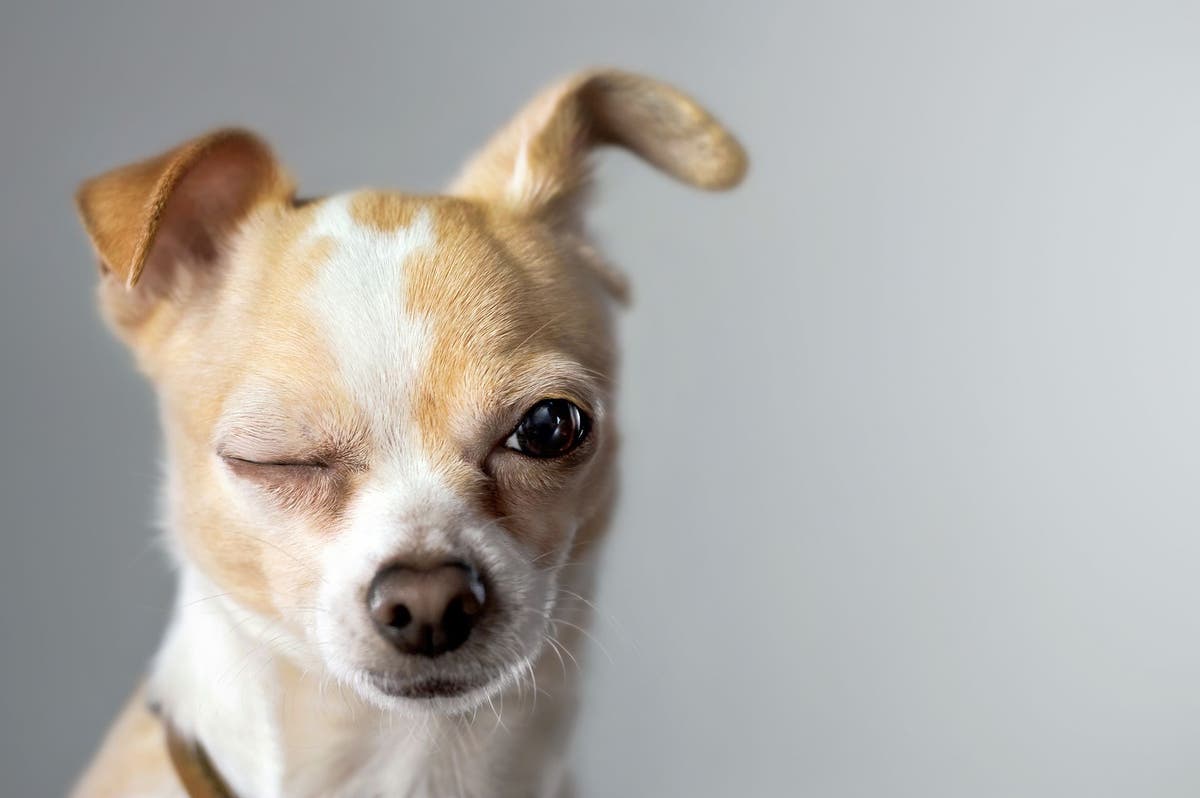

Eye and Ear Health
How Will My Dog Do With One Eye?
Published: February 12, 2024
Discover how your dog's eye and ear health can impact their quality of life and learn how they can thrive with one eye. Explore expert tips and advice.
(Many of the links in this article redirect to a specific reviewed product. Your purchase of these products through affiliate links helps to generate commission for Pawsomeoldies.com, at no extra cost. Learn more)
Table of Contents
Introduction
Losing an eye can be a challenging experience for anyone, including our beloved canine companions. Dogs are incredibly resilient animals, but the loss of an eye can have a significant impact on their physical and emotional well-being. As pet owners, it's natural to be concerned about how our furry friends will cope with such a life-altering change. Understanding the implications of this loss and learning how to support our dogs through the adjustment process is crucial for their overall health and happiness.
In this article, we will delve into the world of canine eye health and explore the effects of losing an eye on our four-legged friends. We will discuss how dogs adapt to life with one eye, the potential challenges they may face, and practical tips for providing the best possible care for a dog adjusting to monocular vision. By gaining insight into this topic, we can better equip ourselves to support and nurture our canine companions through this transition.
Read more: Why Do Dogs Blink One Eye
Understanding the impact of losing an eye on a dog
Losing an eye can have a profound impact on a dog's physical and emotional well-being. Canines rely heavily on their senses, including sight, to navigate the world around them. When a dog loses an eye, it can disrupt their spatial awareness, depth perception, and overall sense of security. Additionally, the loss of an eye can lead to changes in behavior and temperament as the dog adjusts to their altered perception of the world.
From a physical standpoint, the loss of an eye can affect a dog's ability to engage in activities that require precise depth perception, such as catching a ball or judging distances when jumping. This can lead to a temporary decline in their coordination and confidence as they learn to compensate for the loss of binocular vision.
Emotionally, the impact of losing an eye can vary from one dog to another. Some dogs may experience anxiety or insecurity as they adapt to their new visual limitations. It's not uncommon for dogs to feel vulnerable or hesitant in unfamiliar environments, especially during the initial stages of adjustment. This emotional response is a natural part of the process as dogs learn to trust their remaining senses and adapt to their changed perspective.
It's important to recognize that each dog will respond differently to the loss of an eye. Factors such as age, breed, and overall health can influence how a dog copes with this change. Younger dogs may adapt more quickly, while older dogs may require additional time and support to adjust to their altered vision.
Understanding the impact of losing an eye on a dog involves acknowledging the multifaceted nature of this experience. It's not just a physical adjustment but also an emotional and psychological one. By recognizing the challenges that dogs face in this situation, we can better empathize with their journey and provide the necessary support to help them thrive in their new reality.
Adjusting to life with one eye
Adapting to life with one eye is a significant transition for dogs. Initially, they may experience disorientation and uncertainty as they navigate their surroundings with altered depth perception. However, dogs are remarkably resilient and can adapt to their new visual reality with time and support from their human companions.
During the adjustment period, it's essential to create a safe and familiar environment for the dog. This includes minimizing sudden changes in their surroundings and providing ample opportunities for them to explore and reorient themselves. By maintaining a consistent routine and offering reassurance, pet owners can help their dogs feel more secure as they adapt to their monocular vision.
As dogs begin to acclimate to their new visual perspective, they may exhibit cautious behavior, especially in unfamiliar settings. It's crucial to be patient and understanding during this phase, allowing the dog to gradually build confidence in their abilities. Positive reinforcement, such as praise and rewards, can encourage the dog to overcome any hesitancy and embrace their newfound capabilities.
Engaging in gentle, low-impact activities can also aid in the adjustment process. Interactive play sessions and short walks in familiar surroundings provide opportunities for the dog to practice spatial awareness and refine their depth perception. These activities not only promote physical exercise but also contribute to the dog's mental stimulation and overall well-being.
Additionally, maintaining regular veterinary check-ups is essential to monitor the dog's ocular health and ensure that their remaining eye is functioning optimally. Any changes in behavior or signs of discomfort should be promptly addressed by a veterinarian to prevent potential complications and support the dog's ongoing adjustment to monocular vision.
Ultimately, adjusting to life with one eye is a gradual process that requires patience, empathy, and proactive support from pet owners. By understanding the challenges that dogs face during this transition and providing a nurturing environment, we can help our canine companions embrace their resilience and thrive in their new visual reality.
Potential challenges and how to address them
Adapting to life with one eye presents several potential challenges for dogs, ranging from physical limitations to emotional adjustments. Understanding these challenges and implementing strategies to address them is crucial for supporting our canine companions through this transition.
Depth Perception and Coordination:
One of the primary challenges dogs face after losing an eye is the adjustment to altered depth perception and coordination. This can impact their ability to engage in activities that require precise spatial awareness, such as navigating obstacles or judging distances. To address this challenge, pet owners can create a safe and obstacle-free environment for the dog, minimizing the risk of accidents and providing ample space for them to move around without obstacles. Additionally, engaging in low-impact activities that encourage gentle movement and spatial awareness, such as short walks and interactive play sessions, can help the dog gradually regain confidence in their physical abilities.
Read more: Why Does My Dog Have One Dilated Eye?
Emotional Insecurity and Anxiety:
The loss of an eye can trigger emotional insecurity and anxiety in dogs as they navigate their changed visual reality. To address this challenge, it's essential to provide a supportive and reassuring environment for the dog. This includes maintaining a consistent routine, offering plenty of positive reinforcement, and creating a sense of predictability in their daily activities. Additionally, providing a comfortable and familiar resting space can offer the dog a sense of security and stability as they adjust to their altered perception of the world.
Social Interaction and Confidence:
Dogs may experience a temporary decline in confidence and social interaction following the loss of an eye. To address this challenge, pet owners can facilitate positive social experiences for the dog, gradually reintroducing them to familiar canine companions and supervised interactions with other dogs. Building confidence through gentle encouragement and positive reinforcement can help the dog feel more at ease in social settings, fostering a sense of normalcy and companionship.
Ocular Health and Monitoring:
Maintaining optimal ocular health and monitoring the remaining eye is essential after the loss of an eye. Pet owners should prioritize regular veterinary check-ups to assess the dog's ocular function and address any potential concerns promptly. Monitoring for signs of discomfort, irritation, or changes in behavior is crucial, as it can indicate underlying issues that require attention. By staying vigilant and proactive in monitoring the dog's ocular health, pet owners can ensure that their canine companion receives the necessary care and support for their remaining eye.
By acknowledging these potential challenges and implementing proactive strategies to address them, pet owners can create a supportive and nurturing environment for their dogs as they adapt to life with one eye. Understanding the multifaceted nature of this transition and providing tailored support can empower dogs to overcome challenges and thrive in their new visual reality.
Tips for caring for a dog with one eye
Caring for a dog with one eye requires a thoughtful and proactive approach to ensure their well-being and quality of life. By implementing practical tips and strategies, pet owners can create a supportive environment that addresses the unique needs of a monocular canine companion.
Read more: How To Tell If A Dog Is Blind In One Eye
1. Regular Veterinary Check-ups:
Prioritizing regular veterinary check-ups is essential for monitoring the ocular health of a dog with one eye. These check-ups allow veterinarians to assess the remaining eye's function, identify any potential issues early on, and provide necessary interventions to maintain optimal eye health.
2. Safe and Familiar Environment:
Creating a safe and familiar environment for the dog is crucial for minimizing potential hazards and promoting a sense of security. Pet owners should ensure that the living space is free of obstacles and provide consistent cues and landmarks to help the dog navigate their surroundings with confidence.
3. Positive Reinforcement and Encouragement:
Offering consistent positive reinforcement and encouragement can bolster the dog's confidence as they adjust to their altered visual perspective. Praise and rewards for navigating obstacles, engaging in play, and exhibiting confidence can reinforce positive behaviors and foster a sense of accomplishment.
4. Low-impact Physical Activities:
Engaging in low-impact physical activities, such as short walks and gentle play sessions, can help the dog maintain physical fitness and spatial awareness. These activities provide opportunities for the dog to practice movement and coordination while building confidence in their abilities.
Read more: Why Does My Dog Keep Closing One Eye?
5. Mental Stimulation:
Providing mental stimulation through interactive toys, puzzle feeders, and training exercises can keep the dog's mind engaged and promote cognitive well-being. Mental stimulation is particularly beneficial for dogs with reduced physical activity, offering them opportunities to stay mentally sharp and fulfilled.
6. Consistent Routine and Predictability:
Maintaining a consistent daily routine and providing predictability in the dog's environment can offer a sense of stability and security. Consistent meal times, exercise schedules, and rest periods contribute to a structured and reassuring routine for the dog.
7. Comfortable Resting Space:
Ensuring that the dog has a comfortable and secure resting space is essential for their overall well-being. A cozy bed or designated resting area provides a sense of comfort and security, allowing the dog to relax and recharge in a familiar and supportive environment.
8. Patience and Understanding:
Above all, approaching the care of a dog with one eye with patience and understanding is paramount. Recognizing the dog's unique needs and providing unwavering support as they navigate their new visual reality fosters a strong bond and promotes their emotional well-being.
By incorporating these tips into the daily care and support of a dog with one eye, pet owners can create an environment that nurtures the dog's physical, emotional, and psychological needs, empowering them to thrive and embrace their resilience in the face of change.
Conclusion
In conclusion, the journey of a dog adjusting to life with one eye is a multifaceted experience that encompasses physical, emotional, and behavioral adaptations. Understanding the impact of losing an eye on a dog and the challenges they may face is essential for providing the necessary support and care during this transition. By acknowledging the unique needs of a monocular canine companion and implementing proactive strategies, pet owners can create a nurturing environment that empowers their dogs to thrive in their new visual reality.
The loss of an eye can initially disrupt a dog's spatial awareness and coordination, leading to a period of adjustment as they acclimate to their altered depth perception. However, with patience, positive reinforcement, and a safe environment, dogs can gradually regain confidence in their physical abilities and navigate their surroundings with resilience. Emotional support is equally vital, as dogs may experience insecurity and anxiety during this transition. Providing a consistent routine, comfort, and encouragement can help alleviate emotional distress and foster a sense of security for the dog.
Addressing potential challenges, such as maintaining ocular health, promoting mental stimulation, and facilitating positive social interactions, is crucial for the overall well-being of a dog with one eye. By prioritizing regular veterinary check-ups, offering mental and physical stimulation, and creating a supportive routine, pet owners can ensure that their canine companions receive the comprehensive care they need to thrive in their new visual reality.
Ultimately, caring for a dog with one eye requires empathy, patience, and a proactive approach to address their unique needs. By implementing the tips and strategies outlined in this article, pet owners can create a supportive and enriching environment that honors the resilience and adaptability of their canine companions. Through understanding, compassion, and unwavering support, dogs can embrace their journey with resilience and continue to experience a fulfilling and joyful life, demonstrating the remarkable capacity for adaptation and perseverance that defines our cherished canine companions.


